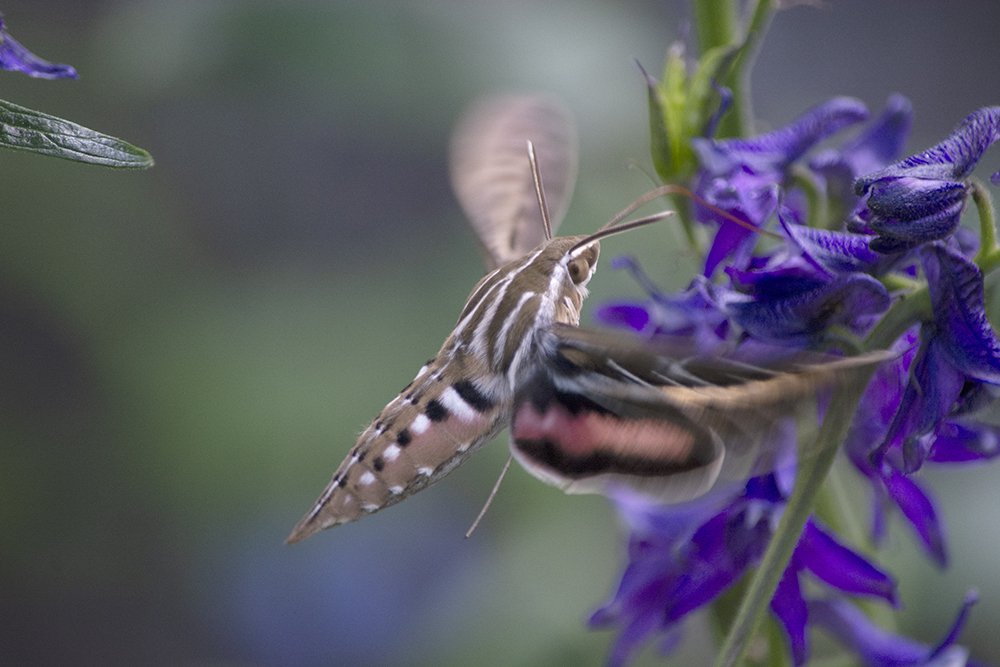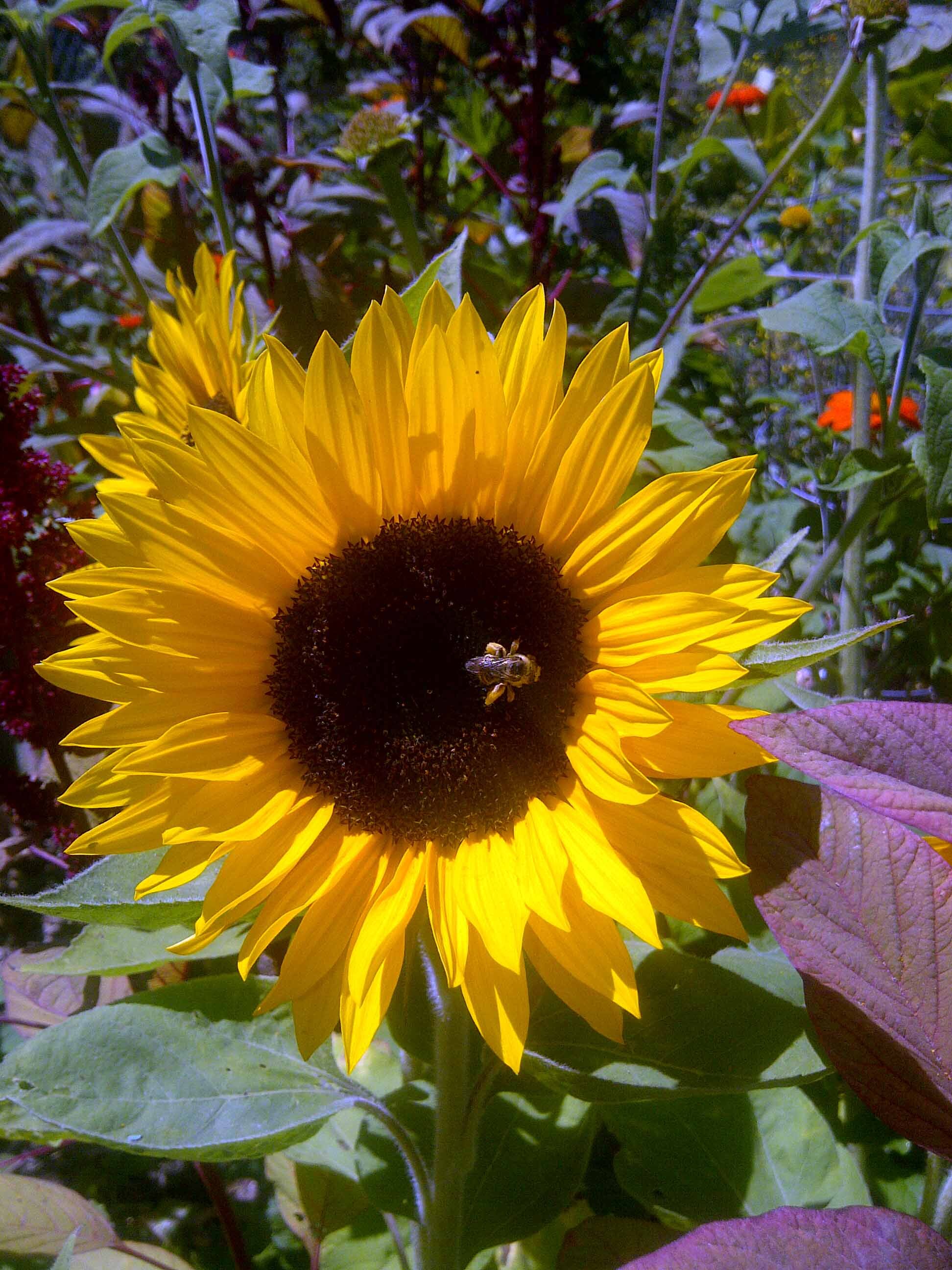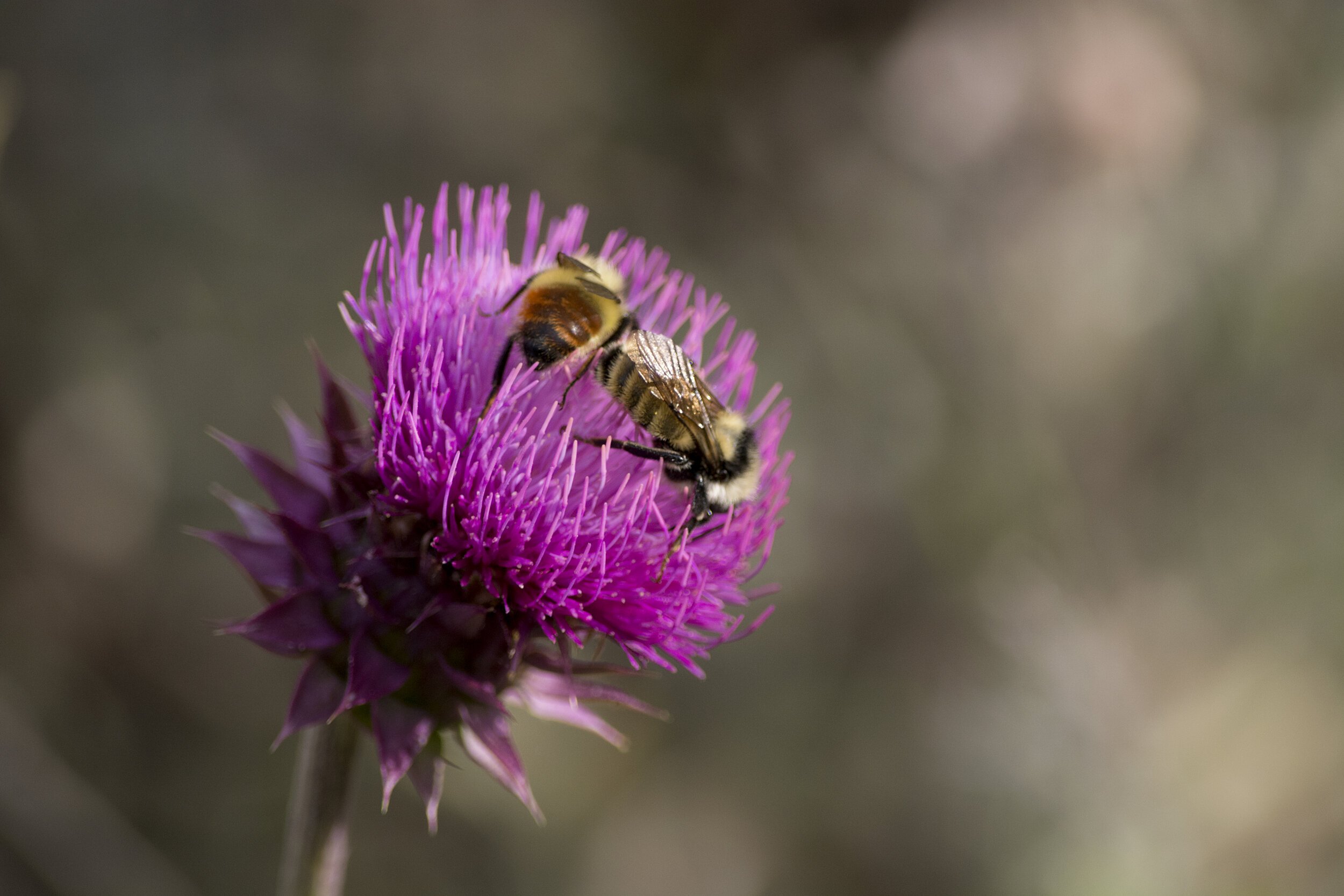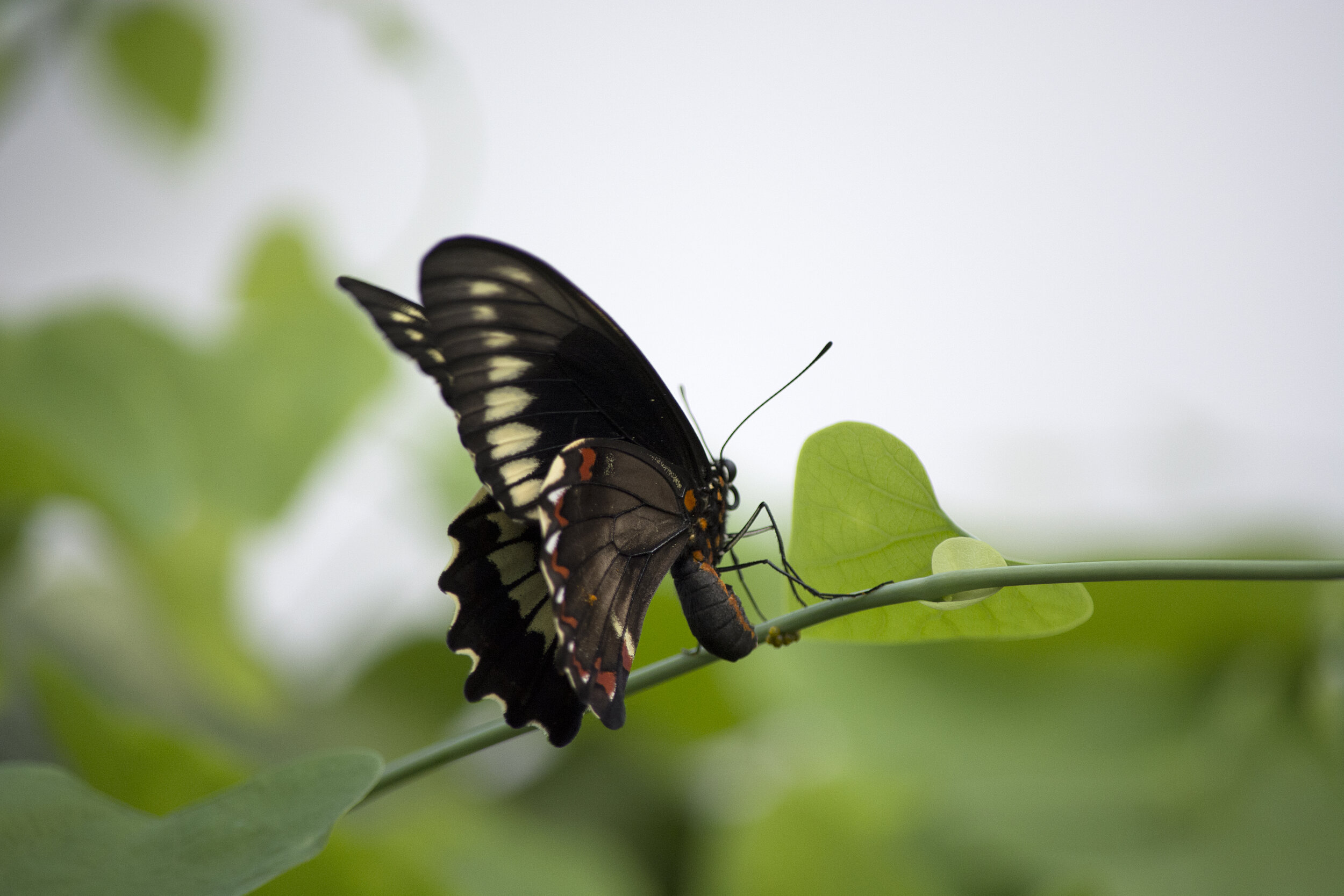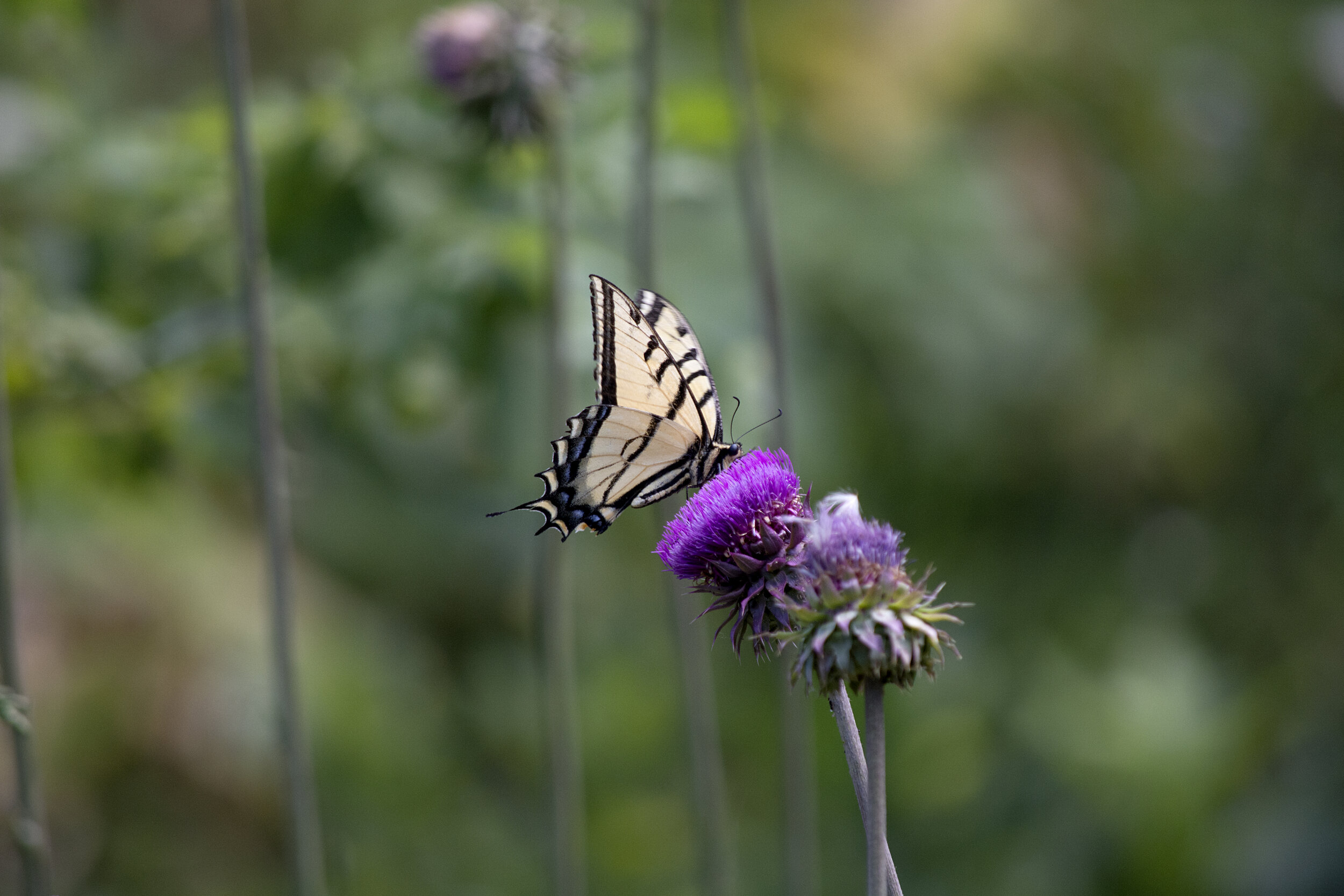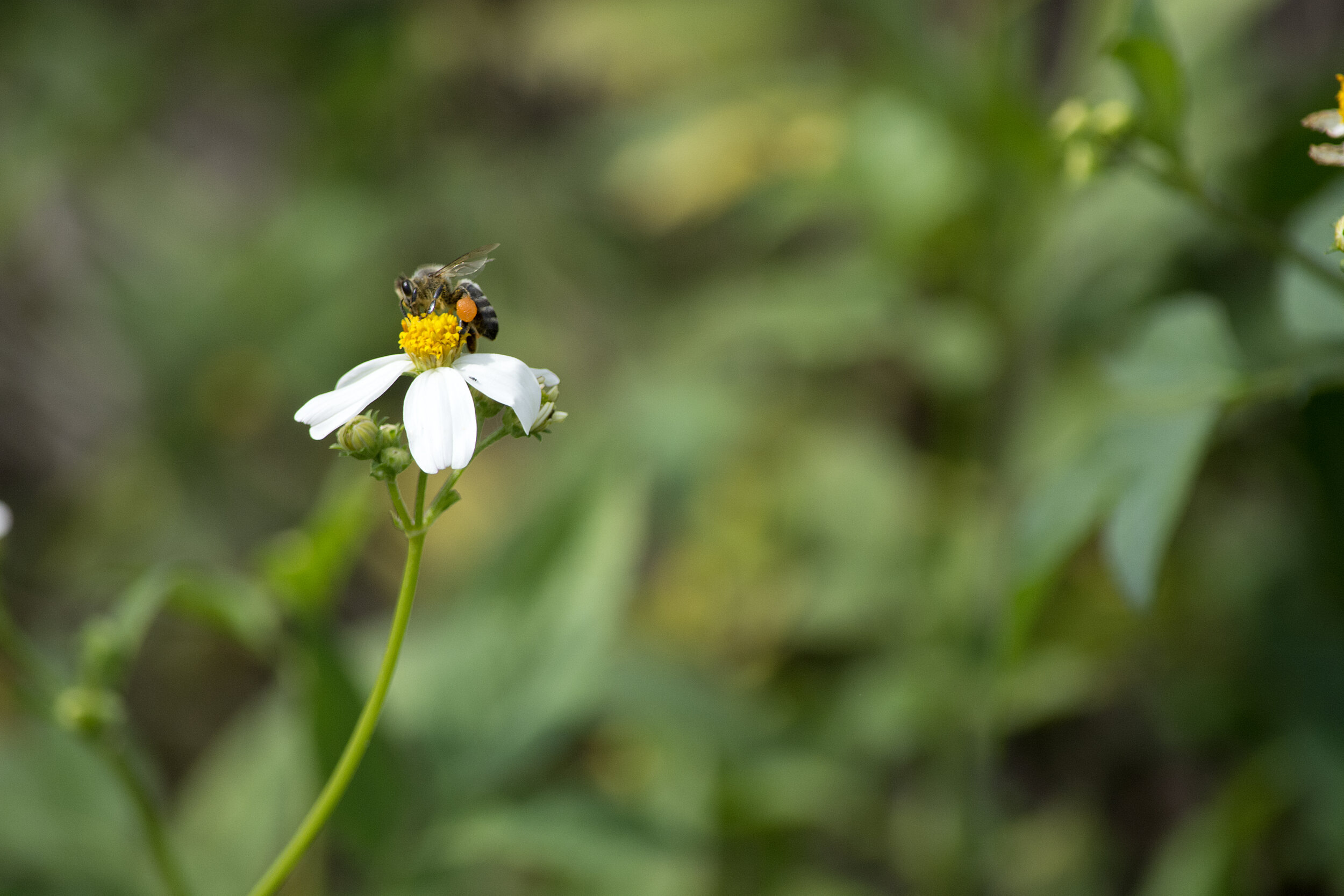Pollinators & Predators
Plants create fragrance to communicate with pollinators like moths, butterflies, beetles, bees, and flies and they protect themselves from herbivores and pathogens as well with volatile compounds.
Pollinator (and predator) stories in the book include:
a sphinx moth, here shown in the Utah mountains, but elsewhere it has a complex relationship with scented tobacco as pollinator and herbivore
a bright blue orchid bee that takes scented compounds from a dragon-shaped gongora orchid and makes perfume
lavender flowers that make fragrance to attract pollinators that is also used in aromatherapy
Sphinx moth gathering nectar and pollinating a larkspur. It's caterpillars include damaging hornworms.
Tropical euglossine or orchid bee gathering fragrance from a scented gongora orchid
Bee love lavender which produces both sweet and sharp aromatics in flowers and leaves.
Ladybug, not a pollinator but a protector, and a pretty violet flower.
Sunflowe with bee
Bumblebees buzzing on a thistle flower
Polydamus swallowtail butterfly laying eggs on a pipevine stem
Ruddy daggerwing on coffee flowers
Atala butterfly
Fritillary butterfly on milkweed
Swallowtail on thistle flower
Honeybee on lignum vitae blossom
Bee on Spanish daggerweed
Atala cocoons on coontie plant
